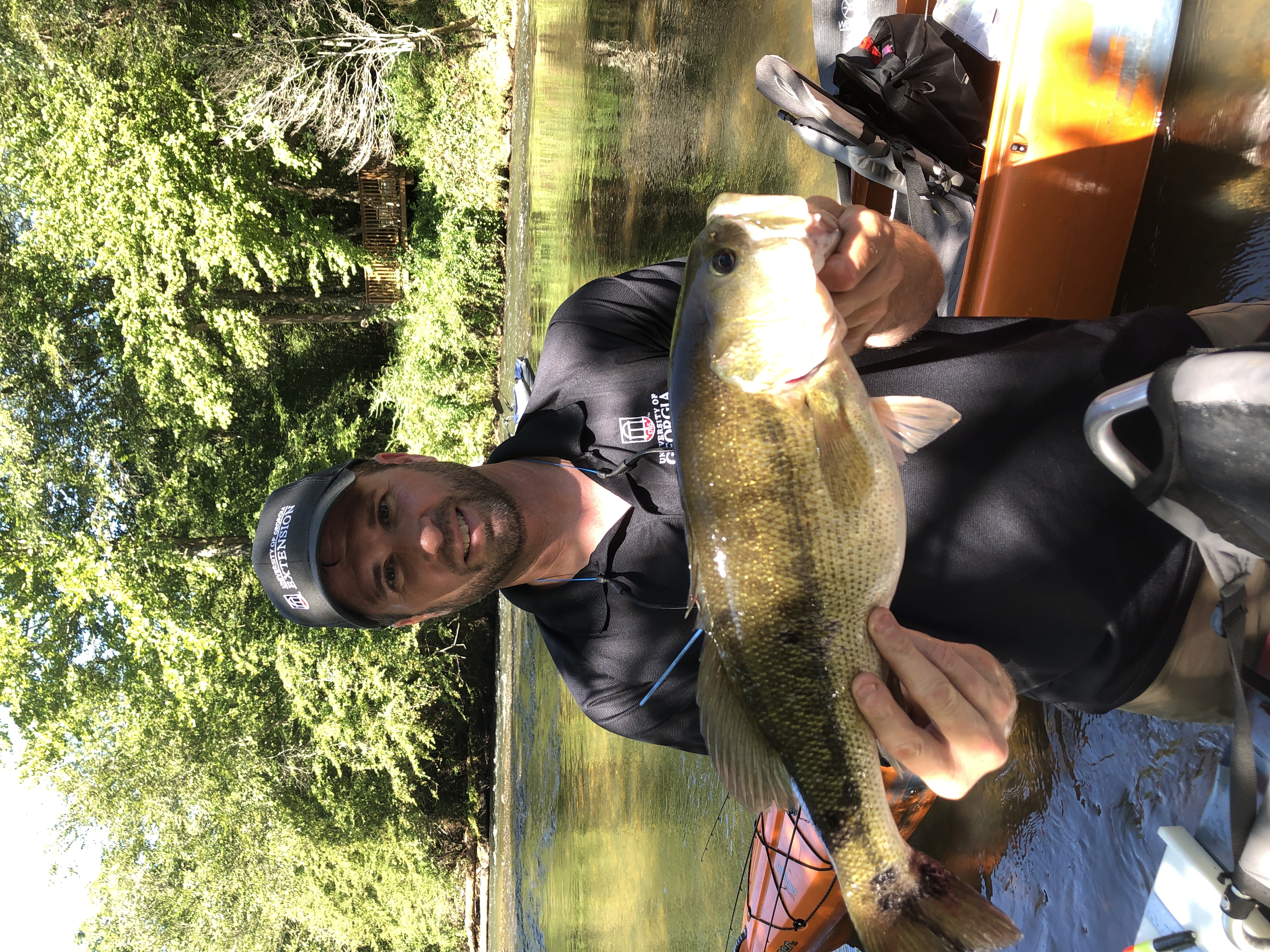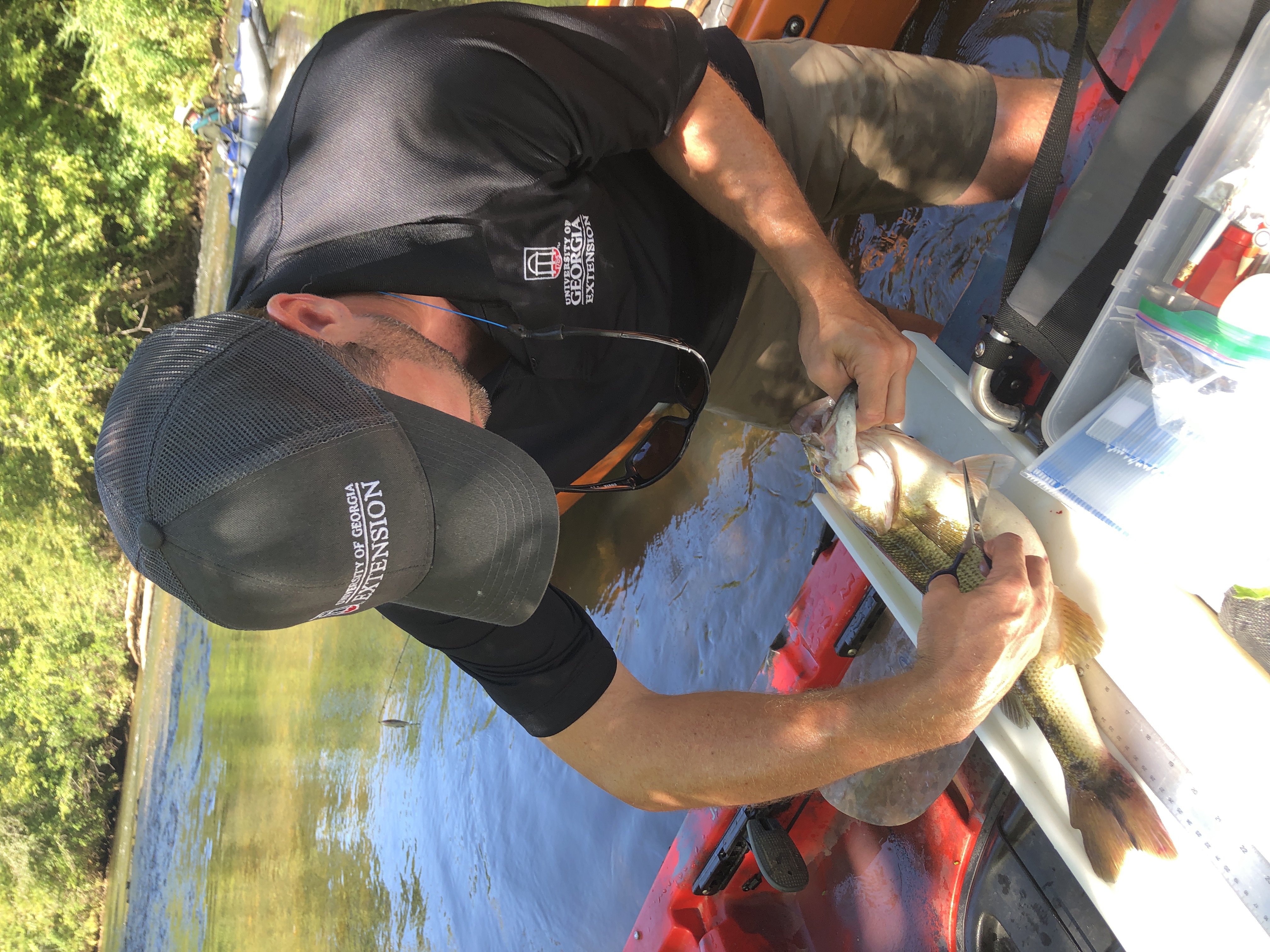-
Patrick, Steven R.
Watershed Restoration Through Native Black Bass Conservation
Summary
Improving water quality in the Upper Chattahoochee Basin to protect the native Shoal and Chattahoochee Bass found there is a focus area in the Upper Chattahoochee Basin and UGA Extension is a major contributor to this effort. New sources of funding were secured for watershed restoration efforts in the Upper Chattahoochee Basin by area agents through a collaborative partnership with the Georgia Department of Natural Resources, Natural Resources Conservation Service, Southeastern Aquatic Resources Partnership and UGA Extension. Just over $80,000 was allocated to the basin in 2020. Throughout the years agents have utilized a combination of 319 grants to achieve their watershed goals. The focus of the project is to improve water quality in the Upper Chattahoochee Basin to protect water quality for the native Shoal and Chattahoochee Bass Found there.
Situation
Water quality and efficient livestock production can often go hand in hand when farmers are innovative in the use of best management practices. Local agents have identified producers in need of assistance, where traditional cost share programs were not available. Installing BMP's increases efficiency for livestock producers by improving the quantity and quality of grazing, reducing foot issues, and reducing pink eye issues. On the environmental side it is very easy to document a significant reduction in bacteria, nitrogen, phosphorus, and sediment entering local streams. Improving water quality in area streams and rivers should help to enhance water quality for native shoal and Chattahoochee bass that reside there.
Response
Local agents identified candidates in the Upper Chattahoochee basin to implement watershed restoration oriented best management practices. Producers were identified at local programs, cattleman association meetings, and through direct response to newspaper and radio ads. These producers were then directed to NRCS to develop a conservation plan similar to EQUIP applications, whereby, SARP could then develop a contract for cost share on the implementation of BMP's. Agents have also engaged volunteers to collect fin clips from native and introduced black species to confirm their genetics for improved management recommendations.
Impact
In 2020 $80,000 in funding was allocated to target three farms in Habersham County in the Soque basin. Implemented practices should reduce erosion and sedimentation to the Soque River, it will improve pasture composition and quality through reduced winter feeding impact, and decrease bacteria levels due to exclusion from surface waters. The farmer will also benefit from less incidence of foot problems, less pink eye, and less time monitoring the cows since they'll come to a designated location for feeding and watering when conditions are poor in the winter. Fin clip data has revealed that the shoal bass population is for the most part uncompromised. The story for Chattahoochee bass is more complex. This effort has signaled for more research and focus, higher in the basin in the years to come to protect this species.
State Issue
Sustainability, Conservation, & the Environment
Details
- Year: 2020
- Geographic Scope: Multi-County
- County: Habersham
- Location: College Station, Athens
-
Program Areas:
- Agriculture & Natural Resources
Author
Collaborator(s)
Non-CAES Collaborator(s)
- Dr Andrew Taylor - Central OK
- Dr Steve Sammons Auburn University
- Dr. Brandon Peoples - Clemson University
- Duncan Hughes - SRWA
- NRCS
- Region II Fisheries Management - GA DNR
- Vance Crain - SARP
Research Impact


